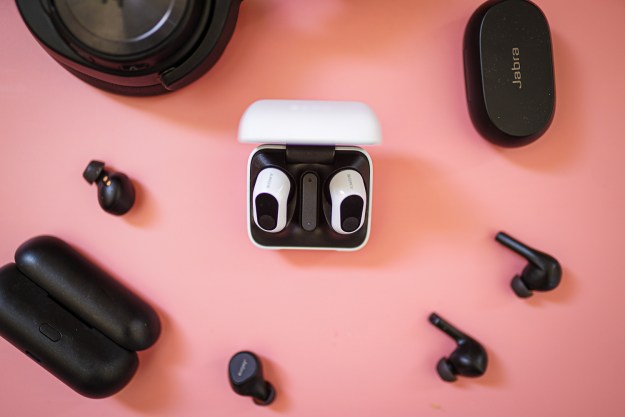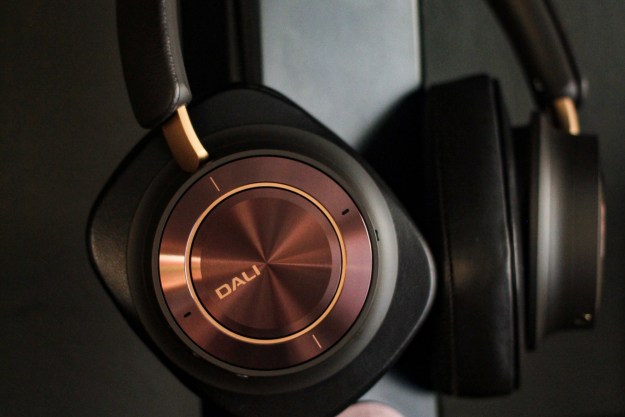Traditionally, music lovers have had to make a choice between convenience and sound quality when it comes to their earbuds or headphones, but the Zorloo Zophia aims to give these folks the best of both worlds in a single product. The Zophia is a set of true wireless earbuds that can be connected to a wired digital-to-analog converter (DAC) and amplifier for fully lossless, hi-res audio from any computer or smartphone. Zorloo is launching the Zophia as a Kickstarter campaign on January 28, with backer prices that start at $140.
If the Zophia lives up to Zorloo’s promises — and with that caveat, don’t forget our general advice as it relates to any crowdfunding project — these hybrid wireless earbuds could provide a solution to a problem that has been dogging the wireless audio world for years: Bluetooth headphones and earbuds — even ones that support Sony’s LDAC or Qualcomm’s aptX HD codecs — aren’t compatible with truly lossless audio, even at the lower, CD-quality end of the lossless spectrum. As a wireless technology, Bluetooth simply doesn’t have enough bandwidth to support lossless audio, making it incompatible with the huge number of lossless audio tracks now available from Apple Music, Amazon Music, Tidal, Qobuz, and other streaming music services.

That will eventually change for select phones and wireless headphones/earbuds as Qualcomm rolls out its aptX Lossless codec, but support for this new codec could be sparse for a while, and it will likely never come to Apple’s devices.
The Zophia earbuds come packaged with a cable that embeds a hi-res DAC/amp. It’s the same technology you’ll find in the company’s tiny Ztella DAC/amp dongle. Connecting this cable to the earbuds and to a phone or computer simultaneously disables the Bluetooth radio and overrides the earbuds’ built-in circuitry, effectively turning them into a set of wired earbuds. With a claimed frequency response of up to 40kHz, they should be able to reproduce the full range of hi-res audio tracks when in wired mode.
It’s not the first time a company has given wireless earbuds the ability to go wired — Motorola’s Tech3 use a similar design — but the Zophia are the first to combine wired use with a lossless, hi-res connection.

There are two versions of the USB-C DAC cable, one which supports PCM audio at sampling frequencies of up to 384kHz and DSD audio at up to 5.6MHz, and a more expensive version that adds full MQA rendering (with a compatible app) along with PCM at up to 768kHz and DSD at up to 22.5MHz, which pretty much covers any lossless audio formats you could ask for. Regardless which cable you choose, there’s a USB-A adapter for use with a computer. There’s also a Lightning adapter for Apple’s iOS devices, but that’s an optional upgrade.
Cleverly, Zorloo has designed the Zophia’s cable connection ports to be backward compatible with standard 2-pin, 0.78mm audio cables, so even if the included DAC cable becomes damaged, or you simply want a way to use the earbuds as straight-up analog in-ear-monitors, you have another connection option.
When using the Zophia as wireless earbuds, the feature set is a little less impressive. There’s no active noise cancellation or transparency mode, and no wireless charging. Battery life seems adequate, at a claimed five hours per charge and a 25-hour total runtime when you include the charging case.
The earbuds are rated IPX4 for water resistance, so even a sweaty or rainy workout shouldn’t compromise their integrity. Zorloo has given the Zophia SBC, AAC, and aptX codec support and the earbuds run on Bluetooth 5.2, so connectivity should be very stable. You’ll also be able to use each earbud independently for calls and music.
Zorloo’s backer pricing on the campaign starts at $140 for the early-bird standard (non-MQA) version, and $163 for the early-bird MQA version, both of which are slated to ship by April 2022. After the campaign, these prices will go up to $179 and $199 respectively, and Zorloo says it expects the Zophia to hit regular retail outlets by April or May 2022.
Editors' Recommendations
- Nothing’s new earbuds upstage Apple, Google, and Amazon by embedding ChatGPT
- Next-gen wireless headphones will get lossless hi-res audio with a little help from Qualcomm
- Audio-Technica’s latest hi-res earbuds debut at CES 2024 for $199
- Raycon launches $149 Everyday Pro wireless earbuds and headphones
- Wireless earbuds case won’t charge wirelessly? Try this fix




